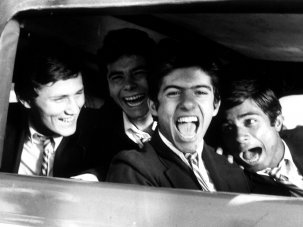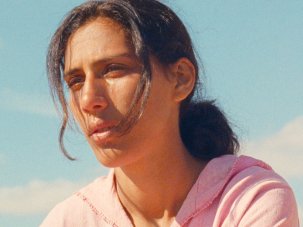Location report | Web exclusive
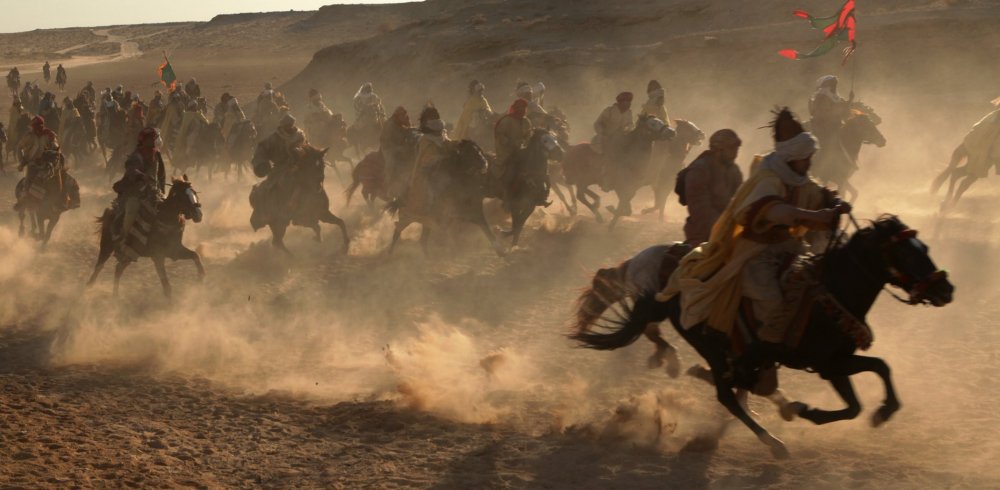
Under a clear sky, the masses have assembled. “Down with the dictator!” they yell, the memory of their fallen comrades and the prospect of a hard-fought victory driving them forward for one last push. At stake is the very future of their land. Their youthful leader ascends the steps of the Presidential Palace, vowing to overturn the vanquished regime’s legacy of corruption and repression. Suddenly, a single word echoes out across the crowd. “Cut!” comes the cry from French director Jean-Jacques Annaud (Quest for Fire, Name of the Rose, Enemy at the Gates). With that, the assembled cast of actors, extras and technicians fade into the background to prepare for the next take.
I’m on the Tunisian set of Annaud’s latest feature, Black Gold. Based on the novel South of the Heart by German-Swiss writer Hans Ruesch (Top of the World), the film tells the story of a rivalry between two Emirs (Antonio Banderas and Mark Strong) in the Arabian Peninsula in the early 20th century just as oil is discovered. Their bitter feud over whether to take advantage of their newfound petrodollar wealth and risk corrupting their religious piety leads to the rise of Prince Auda, a young, dynamic leader (Tahar Rahim) who promises to unite the various tribes of the desert kingdoms. (In the interest of full disclosure, Black Gold is also the first feature film your reporter has worked on since making the shift from film journalism – an alumni of both this esteemed publication and industry bible Variety – into film production.)
The scene above occurs towards the end of Black Gold as Auda is swept to power following a bloody insurgency. Remarkably, it was shot on 15 January last year, the very morning after Tunisia’s then-President Zine El Abedine Ben Ali was overthrown in what has come to be known as the Jasmine Revolution. Those events were sparked by the actions of a single young Tunisian market vendor, Mohammed Bouazizi, who on 17 December 2010 in the town of Sidi Bouzid, only a few miles from where Black Gold had been shooting in Tozeur, set himself on fire in protest at the lack of jobs and corruption in his country.
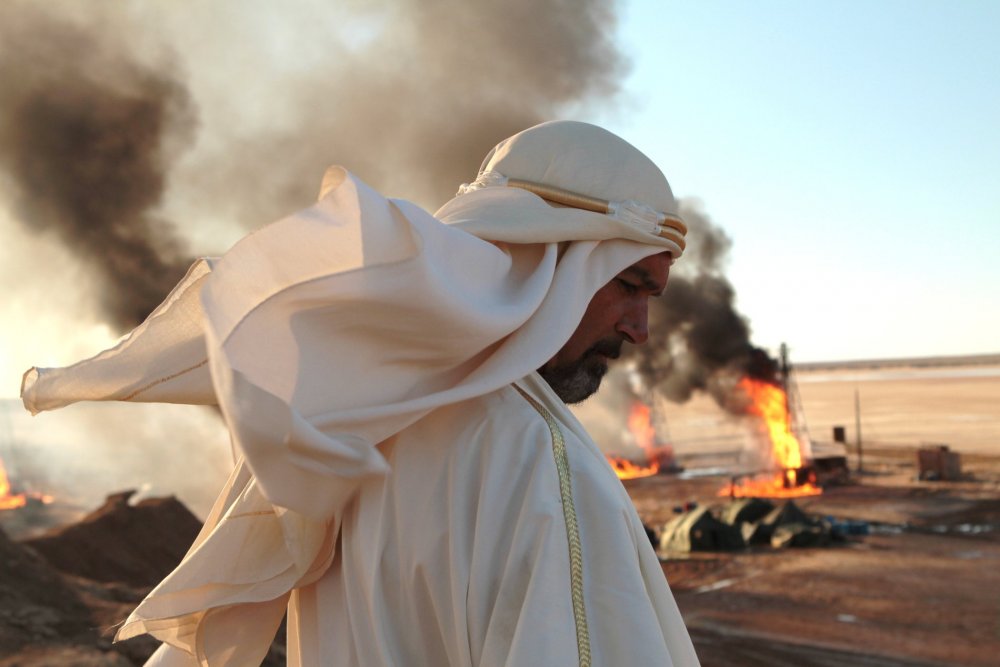
Antonio Banderas as Emir Nessib
Black Gold was supposed to be a work of fiction. Though the story was inspired by real-life events and figures that had shaped the Gulf in the 1930s, Tunisian producer Tarak Ben Ammar – who first read Ruesch’s book over 30 years ago, while Star Wars was shooting at his Carthago Studios – had always envisaged an epic throwback to the likes of David Lean’s seminal Lawrence of Arabia, replete with non-CGI landscapes and battle scenes featuring hundreds of extras.
“I’d always been a fan of Lawrence, but felt there needed to be a film about the Arabian Peninsula that took the story on and told it from the Arab perspective,” says Ben Ammar, who started his career in the 1970s working with Franco Zeffirelli (La Traviata), Roman Polanski (Pirates) and the Monty Python team (The Life of Brian). “Following 9/11, I’d been disturbed by how Arabs and Muslims were often portrayed as terrorists or criminals in films. I wanted to make a film about an Arab hero. None of us knew there’d be a revolution in Tunisia and across the Arab world at the same time as us making this film. History is always more real than any politician could dream it to be.”
The events in Tunisia saw the film’s themes of political and religious upheaval played out for real. After weeks cocooned in meticulously designed sets awash in flowing robes and the musky scents of the bazaar, the cast and crew suddenly found themselves at the epicentre of the Arab Spring. Virtually overnight, an entire region became convulsed by unprecedented scenes of protests, which would lead to the toppling of autocratic rulers in Tunisia, Egypt and Libya. (At the time of writing, Syria remains on the brink.)
Until that point, Black Gold had been accompanied by the customary difficulties of a big-budget production filmed almost entirely on location in the desert. A freak snowstorm – the first of its kind in over half a century – hit during the first week of principal photography, temporarily turning the sand dunes of southern Tunisia into a glacial landscape.
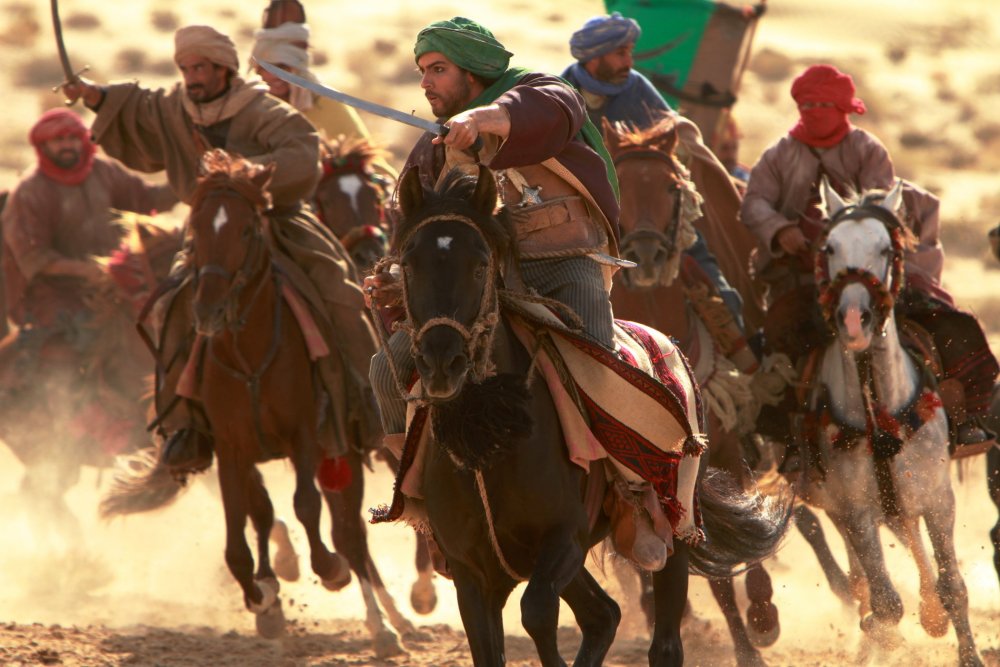
Tahar Rahim as Prince Auda
Lead actor Rahim would also be thrown violently from his horse while filming the climactic battle charge after an explosive charge detonated fractions of a second earlier than in rehearsals. The immediate fears of a crippling injury thankfully dissipated once it was discovered our hero’s fall had been broken by his backside rather than his neck.
Those incidents, however, would pale in comparison to the drama that was to ensue once Black Gold resumed filming after the Christmas break at Empire Studios in Hammamet, some 30 minutes by car from the capital of Tunis.
Work on Black Gold had initially continued largely unaffected by the growing wave of protests one would read about in the south of the country following Bouazizi’s self-immolation. At the time, the country could still lay claim to its reputation as one of the most stable and secure in the Arab world. Since its independence from the French in 1956, Tunisia had only been governed by two presidents, including Ben Ali, and largely avoided the woes of its neighbours, be they the internecine conflicts of Algeria or the sheer lunacy of 42 years of Muammar Gaddafi’s rule in Libya. Tunisia’s founding president Habib Bourguiba had famously enshrined complete gender equality in the country’s constitution. Tunisia also enjoyed one of the best standards of education and literacy in the Arab world and could boast a genuine middle class.
The tipping point would come with Bouazizi’s death on 4 January after three weeks of clinging to life on a ventilator (the image of a beleaguered Ben Ali visiting the mummified young man in the emergency ward of the hospital has since become iconic). Each day brought news of more protestors being shot dead by heavy-handed security forces. Even then, the cast and crew of Black Gold remained largely insulated. One could still find Freida Pinto as Princess Leila, daughter of Banderas’s scheming Emir Nessib, playfully rehearsing with her on-screen father. Elsewhere, Rahim as Auda, the librarian turned warrior, rhythmically bopped his head to rap music on his MP3 player between takes.
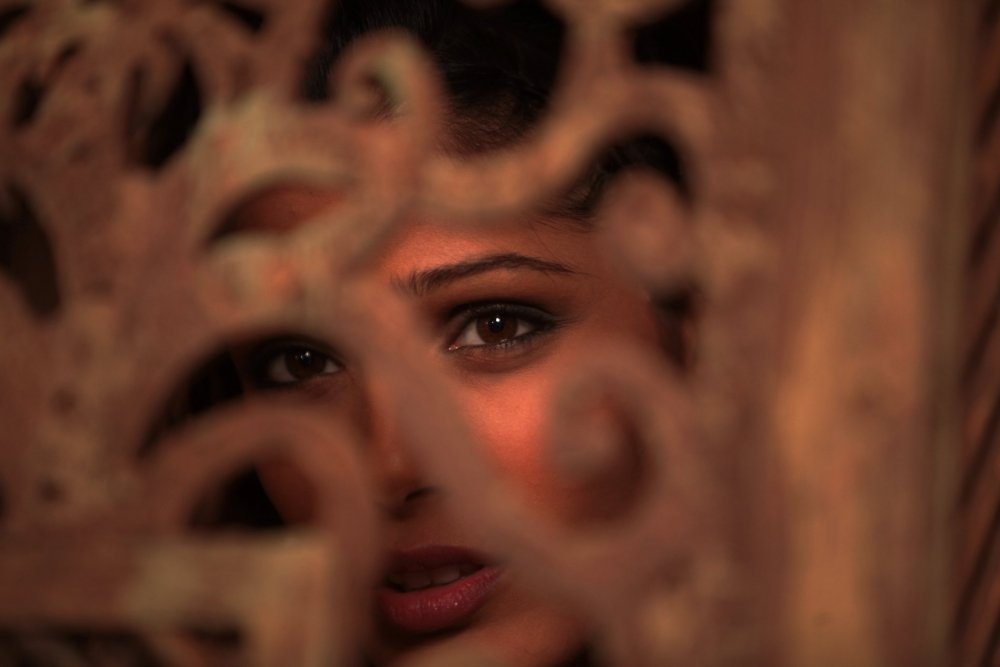
Freida Pinto as Princess Leila
“The set was still perfectly quiet during those days,” recalls Annaud. “I’d ask my Tunisian crew what was going on and they’d always reply that it was only a few demonstrations and nothing to worry about. We were still living in the middle of our fiction. We had no idea that everything would happen so suddenly.”
The reverie would be shattered on 11 January with the news that one of the Tunisian technicians had been shot by security forces while returning home from set the previous evening and was in a serious condition. To compound matters, a contingent of international film journalists were due in Tunisia, along with executives from the film’s distributors Warner Bros and Universal Pictures, for a previously-arranged set visit. Ben Ammar went into crisis-management mode. Any journalists who hadn’t yet boarded their planes were told to go home and await further instruction. Calls were made to the army – whose allegiance at this point was still uncertain – to ensure the security of the crew and the sets. By the time the remaining six journalists had landed in Tunis, the government had imposed a nationwide curfew and state of emergency.
Still, work on Black Gold continued, even if the curfew meant losing two shooting hours a day and changing the travel routes from the hotel to the set to avoid military checkpoints. There were, of course, distractions, including the typically inquisitive French journalist who kept trying to sneak away from the set to cover the burgeoning revolution. There was also Spanish director Gabe Ibanez (Hierro), who had flown in to Tunisia in early January at Banderas’s invitation to scout locations for a future film project. By the time he flew out of Tunisia ten days later, he’d been shot at by security forces on the streets of Tozeur, broken a military curfew in central Tunis and seen his car pelted with bricks on the highway to Hammamet.
“What we’d been pretending was now happening all around us,” says lead actor Rahim. “It was amazing, scary and exciting. I felt something very rare because I was at the right place at the right moment. You don’t go through something like this every year.”
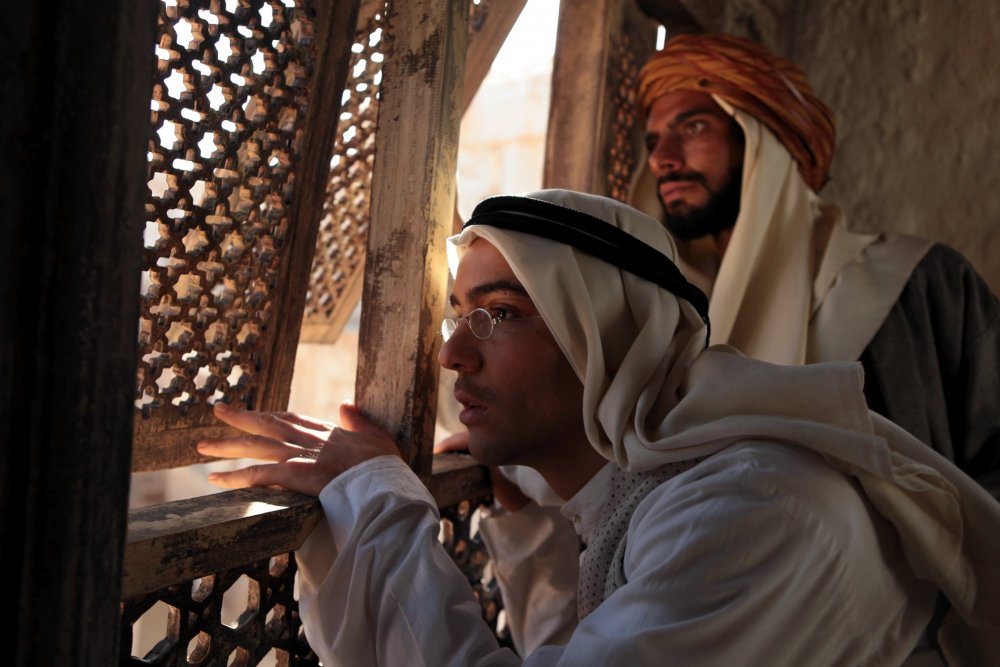
The morning of 14 January began with an air of uneasy calm. The previous evening Ben Ali had given a speech he hoped would save his presidency, committing to step down within months, respect the total freedom of the press and internet and launch investigations into abuses of power and corruption within his ranks. The journalists visiting the Black Gold shoot had by now all safely returned home, and the filmmakers raced to complete the remaining four days of filming scheduled inside Tunisia.
In the Tunis, tens of thousands of Tunisians took to the streets and marched on the symbols of the regime’s power. Back at Empire Studios, Annaud was deep in conversation with his cast as the Tunisian crew anxiously updated each other with news from friends and family at the demonstration. Sometime that afternoon, what began as a quiet murmur suddenly roared through the set. Ben Ali had fled the country and the army was now in control. What had been inconceivable only days ago had suddenly became true. The set needed to be evacuated immediately.
“It was almost a tragic-comic situation,” says Banderas. “We were all in our costumes running around, our turbans flying in the wind. I still had my beard on while Ben Ammar was organising for the whole cast and crew to get out. We had two huge convoys going in different directions to different hotels. The movie became the movie.”
Rumours circulated of armed remnants of Ben Ali’s militias roaming the streets engaging in gunfights with the army, and of looters attacking private property. At one point a crowd of locals carrying sticks and bats in their hands reached the gates of Empire Studios – only to greet Ben Ammar as a long-lost uncle when they arrived, promising to protect his studios in the event of any acts of vandalism. Tunisian TV channels, including Ben Ammar’s own Nessma TV, spent the evening calling for calm as a nation held its breath.
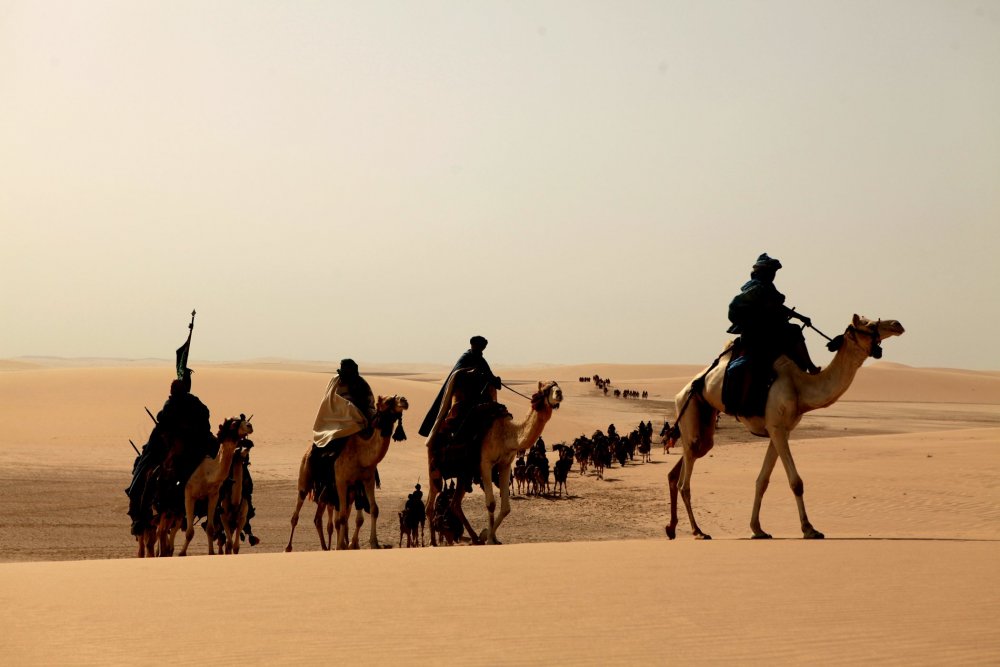
The morning of 15 January brought a perfectly clear sky and brilliant sunshine. As Annaud directed Black Gold’s final Tunisian exterior shot – Auda usurping the old guard – Ben Ammar prepared to airlift his cast and crew out of the country. Displaying old-school mogul prowess, the producer worked his contacts through the night to arrange for seven private planes to fly in from across Europe to Hammamet’s still-unfinished airport and evacuate the delegation of over 70 actors and technicians. Along the road to the airport were posted dozens of Tunisian extras dressed as soldiers with prop rifles to give the illusion of a military escort, in case they convoy was intercepted by rogue elements of the security forces.
Black Gold eventually wrapped in Tunisia on 22 January, only four days later than originally planned and somehow still on budget. In the ensuing weeks, the youth of the Arab world would gain a new profile around the world. They were now the tweeters of the revolution, a genuine social network demanding dignity, opportunity and freedom. Time magazine posthumously named Mohammed Bouazizi its Person of the Year. Egypt’s Tahrir Square (Liberation Square) would serve as an inspiration for protestors in Europe.
“The remarkable thing is, that was one of the themes of our film,” says Annaud. “Who knew that the whole region was going to tumble?”




